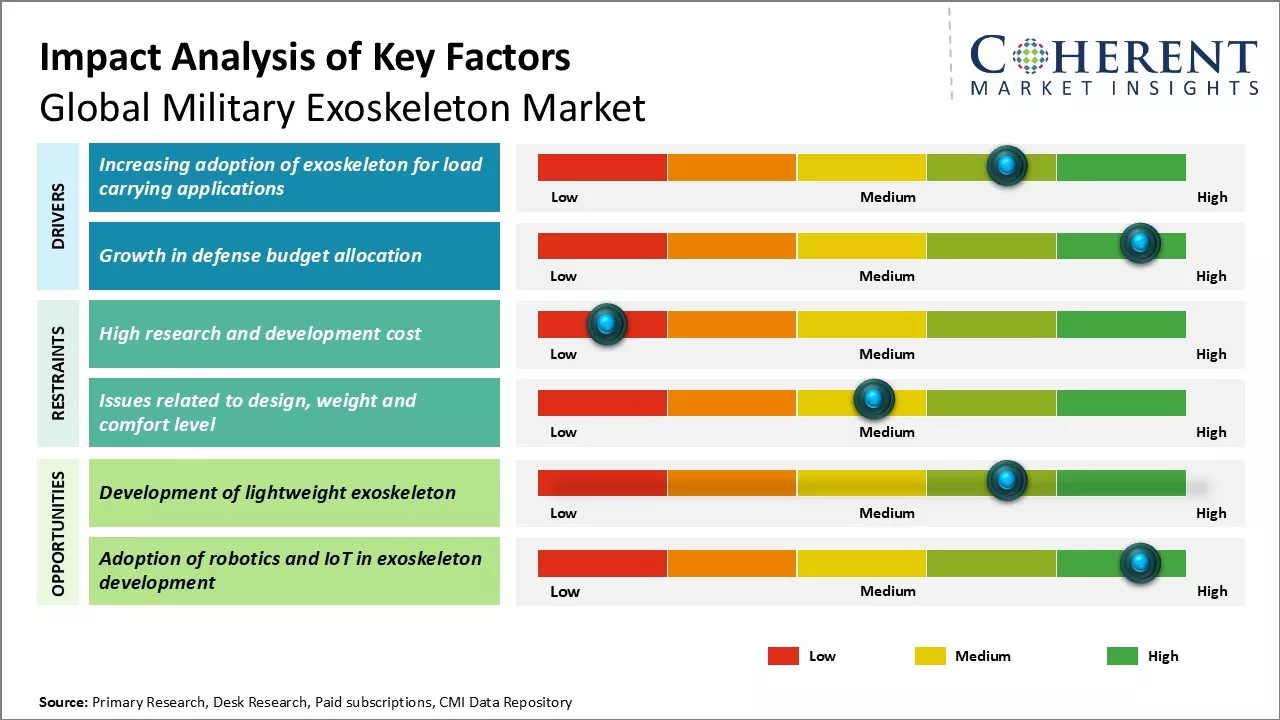Global military exoskeleton market is estimated to be valued at US$ 175.4 Mn in 2025 and is expected to reach US$ 452.9 Mn by 2032, exhibiting a compound annual growth rate (CAGR) of 14.5% from 2025 to 2032.

To learn more about this report, Request sample copy
Increasing investment in defense technologies by various countries and rising application of powered exoskeleton suits across different military operations for enhanced soldier protection and mobility can boost demand for military exoskeleton.
Market Driver - Increasing adoption of exoskeleton for load carrying applications
Growing focus on enhancing soldier mobility and safety has boosted adoption of military exoskeletons for load carrying applications. Military personnel, particularly infantry forces, are often required to march for extended periods carrying heavy gear weighing upto 50 kgs or more. This places tremendous physical strain and can even lead to long term injuries. Exoskeletons help alleviate this burden by actively assisting in lifting and carrying the load.
Heavy load carrying hinders agility and speed of response. Exoskeletons enable the same soldier to carry equivalent load with minimal exhausting effects. This translates to better endurance and performance in combat zones. Coupled with advancing terrain navigation technologies, exoskeletons allow small mobile units to operate independently for longer duration missions.
Several armies including U.S., U.K., France, and Israel, among others have started pilot programs and limited procurement of exoskeleton prototypes mainly for this load carrying function. Key manufacturing companies such as Lockheed Martin, Ekso Bionics, and Sarcos Defense have partnered with military research organizations to refine exoskeleton design matching army requirements. Latest models use battery powered actuators and pneumatic muscles to support the load through intuitive controls. Some versions offer additional assistance like powered knee joints for stair climbing.
Safety of soldiers is a top priority and exoskeletons can prevent debilitating musculoskeletal injuries from repeated weight loading. Concerns around operational challenges like reliability in adverse zones can get addressed through rigorous testing under crucial conditions. As military exoskeleton technology matures in tandem with soldier needs, their adoption rates for load carrying roles can witness strong growth.
Joining thousands of companies around the world committed to making the Excellent Business Solutions.
View All Our Clients